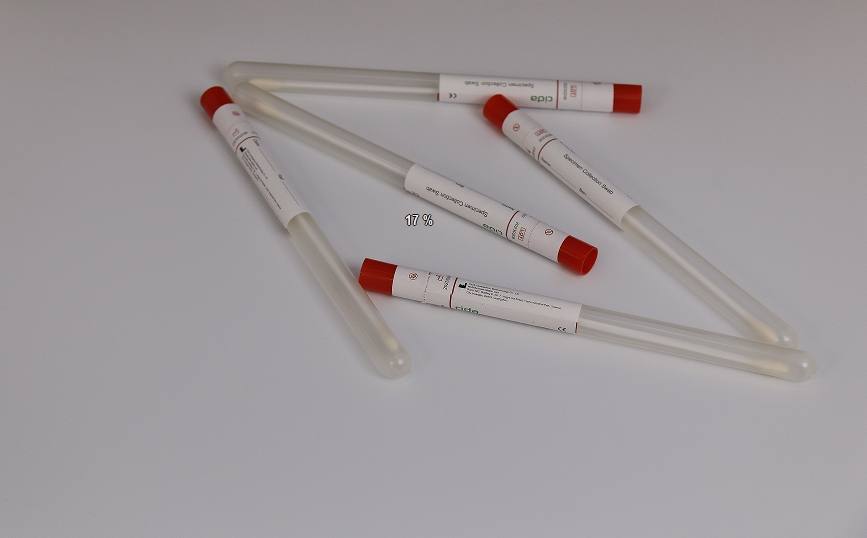Introduction to Disposable Sterile Sampling Swab Products
Release time:
Mar 22,2024
Cida (Guangzhou) Biotechnology Co., Ltd. is located in the beautiful flower city-Guangzhou City. It is a high-tech enterprise integrating R & D, production and service of medical consumables. The company has passed ISO 13485 quality management system certification and EU CE certification. The company's products are exported to many countries and regions around the world, and has become a supplier in this field in South China.
CIDA (Guangzhou) Biotechnology Co., Ltd.
Introduction to Disposable Sterile Sampling Swab Products
Disposable female swabs, also known as cervical swabs, vaginal swabs, or gynecological swabs, are currently primarily used for collecting samples from the female cervix and vagina for related tests to determine if women have developed cervical and vaginal diseases. Currently, the common screening for cervical cancer, which includes the HPV (Human Papillomavirus) test + TCT (ThinPrep Cytology Test), a liquid-based cytology test, first requires the use of female swabs for sampling. Due to the time-consuming and labor-intensive nature of traditional HPV testing sampling methods, patients must also overcome psychological and physiological discomfort. Self-collection HPV testing has become a growing choice for many women. However, many women have little knowledge of how to use disposable female swabs and are unsure of the proper procedures. Let’s learn together about their usage below.
I. Product Usage
Disposable female swabs are medical devices used to collect patient vaginal secretions for testing, which can assist in diagnosing related diseases. The primary sample collection for disposable female swabs is from women’s saliva and vaginal secretions, primarily used to collect patient vaginal secretions. Through fluorescence quantitative PCR technology, the vaginal secretions of women can be tested to determine if there is bacterial infection, fungal infection, trichomoniasis, and other infectious diseases.
Using any positive result from the conventional sampling method as the standard, the total infection rates of chlamydia trachomatis, gonorrhea, and vaginal trichomonas in the study population were 9.2%, 7.6%, and 16.1% respectively. The self-collected vaginal swabs had detection rates of 89% and 96% for chlamydia trachomatis and gonorrhea respectively. In comparison, the detection rates of the endocervical swabs were 79% for chlamydia trachomatis and 91% for gonorrhea, while midstream morning urine showed detection rates of 79% for chlamydia trachomatis and 83% for gonorrhea. Therefore, self-collected vaginal swabs for testing chlamydia trachomatis, gonorrhea, and vaginal trichomonas in women are a simple, sensitive, and easily acceptable clinical application and disease screening method. [1]

II. Product Features
1.With exceptional absorbency, it can increase the quantity of specimens collected from 20% to 60% compared to traditional sampling swabs.
2.It has a release rate of over 90% for the collected specimens, thus ensuring a high level of reliability for the results.
3.The product is radiation sterilized and packaged in individual paper bags/tubes, ensuring safe and clean use.
4.The product is lightweight and convenient for the storage and transportation of specimens.
5.The swab handle made of PP material is flexible and not easy to deform or break

III. Product Use Metho
1.Check the packaging of the female swab to ensure it has not expired and that there is no obvious damage. If the swab is expired or the packaging is damaged, do not use it.
2.Wash your hands thoroughly and put on disposable gloves. Open the packaging of the female swab carefully, taking out the sampling swab without touching the swab head to prevent contamination.
3.Hold the swab rod with your hand. Choose a squatting or standing position. Use the swab to gently wipe away any excessive secretions around the cervical opening. Then insert the swab into the cervical opening and rotate it in a clockwise direction 3 to 5 times to collect vaginal secretions.
4.After sampling, slowly withdraw the female swab and place it into a sampling tube containing cell preservation solution. Break off the swab at the fold point, leaving only the swab sampling head in the preservation tube.
5.Ensure the sampling head is fully immersed in the preservation solution, then tightly screw the cap shut. Record the information of the sampled individual on the label, and send the sample for testing as soon as possible.

IV. Product Precautions
1.The dehydrated cotton swab may cause a very slight prickling sensation for some individuals. Those with allergies to dehydrated cotton should perform a skin allergy test by gently rotating the swab on the sampling area before use.
2.If an allergic reaction occurs after use, stop using the product immediately.
3.This product is for single-use only; do not reuse it.
4.Do not engage in sexual activity for 48 hours before collecting vaginal secretions.
5.Avoid using vaginal cleansers or lubricants, including contraceptive creams, in the 48 hours leading up to the collection.
6.It is not recommended to perform the test during menstruation.

Ⅴ.References
[1]Zhang, R., & Wang, Q. (2003). Self-sampling vaginal swab for the diagnosis of chlamydia, gonorrhea, and trichomonas infections in remote areas of northern Australia. Foreign Medicine Skin and Dermatology, 29(4), 262-264.
Get a free quote!
More information
